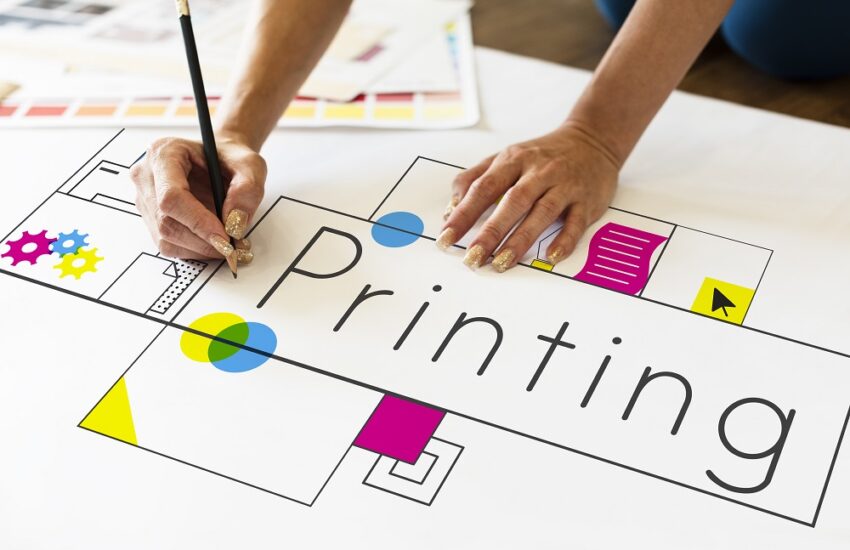What Is a 3D Printer?
With the gradual development and progress of the concept of inkjet printing, printing technology
has evolved from the stage of using ink to the stage of using various materials. In the time since
then, 3D printing technology has been continuously improved and developed in various
applications in different industries, becoming one of the hottest cutting-edge technologies today.
After engineers use 3D aided design software to design a model, whether it is a house or an
animal model, it can be printed by 3D printers with various organic and inorganic raw materials,
such as rubber and plastic.
Also, Read – What is Branding in Graphic Design
Why Use 3D Printing
1. Cheap
3D printers are cheap and easily accessible to anyone who owns a printer. Designers can turn
ideas directly into reality, repeating designs quickly, saving time and making complex geometries
with ease.
2. Easy to Install
Unlike most stand-alone CNC machines, 3D printers have minimal installation costs or
procedures. For every new part, large manufacturing machinery needs to properly handle the
mold, which means significant setup costs and procedural steps. 3D printers are able to design
and manufacture parts at a low cost, then quickly modify, print and test the design many times
before the part is fully produced.
3. Interference-Free
3D printing is a manufacturing process without interference. At the touch of a button, everything
designed will be made. Other manufacturing methods introduce human error into the
manufacture of parts, such as lathes, which are set up by the manufacturer and the workpieces
aligned, measured, and machined by the user.
4. Customize
Easily print by customizing files for specific people or things without changing the machine's
settings. The ability to create custom content is critical for manufacturers. Because this makes it
possible to make designs for a specific user, as well as make designs provided by others.
Also, Read – Top 5 Video Editing Apps For Android Without Watermark
Common Consumables For 3D Printing
1. Acrylonitrile Butadiene Styrene (ABS)
ABS is tough, non-toxic and retains color well. It is also easy to form and difficult to break
because it melts and becomes flexible at about 220°C. These properties make ABS ideal for 3D
printing. The printer needs to have a heated print bed as ABS will stick to the heated print bed.
It is also waterproof and chemical resistant. When heated, ABS emits an unpleasant odor, and
the vapor may contain some nasty chemicals, so good ventilation is required. ABS is not suitable
for long-term outdoor use as it will be broken down by UV radiation, losing color and becoming
brittle.
2. Polylactic acid (PLA)
PLA is a tough, elastic material, but it is not as heat resistant as ABS. PLA begins to deform at
temperatures above 60°C. It has a slight odor when heated, but is nontoxic. It has a slight odor
when heated, but is nontoxic.
Compared to ABS, PLA is easier to print because of its stickiness. It adheres well to a print base
covered with white glue or blue paint tape, which means no heated print bed is required. The
material is also biodegradable. Therefore PLA is often the preferred option for low-cost 3D
printers.
3. PVA
PVA is used to make the supports that hold the 3D printing in place. PVA is a synthetic polymer
that is soluble in water. It melts at about 200°C, and if heated to higher temperatures, it releases
some nasty chemicals.
It can be used in a standard 3D printer extruder to form parts that support other objects, and it
adheres well to a heated glass print bed. Once the print is complete, submerge it in water and
the PVA part will dissolve, leaving the insoluble print left behind. This makes it easier to print
complex models that require supports or even models that contain moving parts.
4. Nylon
Nylon is a tough material with high tensile strength, which means it can hold a lot of weight
without breaking. It melts at about 250°C and is non-toxic.
The use of nylon as a 3D printing material is relatively new, but since it produces prints that are
very rigid and less prone to damage, the material is gaining popularity. It is cheap because nylon
is widely used in other industries and is not damaged by most common chemicals. However,
nylon does require high temperatures to print, 250°C higher than many extruders can handle. It
is difficult to make it adhere more strongly to the print bed than ABS or PLA, which requires a
heated print bed and white glue to adhere while printing.
5. Polycarbonate (PC)
Thermoplastic materials refer to plastics with heating softening and cooling hardening
properties. The main thermoplastic materials are polyethylene (PE), polypropylene (PP),
polytetrafluoroethylene (PTFE) and so on. PC is a real thermoplastic material. It has the
characteristics of high strength, high temperature resistance, impact resistance and bending
resistance. Its strength is 60% higher than that of ABS material. It can be used as final parts and
even super-strong engineering products.
Also Read – Best Photo Editing Apps for Photographers
6. Wood filaments
Rather than being made of wood, these filaments contain very fine particles of wood chips, PLA,
and a polymer that binds them together. After printing and polishing, the resulting material looks
a lot like wood. Some of these filaments can change the color of the printed material by changing
the temperature.
White glue is added to these materials to help stick the print to the print bed. However, each
different filament required a lot of experimentation to successfully print. The material also
requires additional surface treatment.
Different 3D printers have different printing principles, as well as different materials and
applicable industries. Selectively compare requirements and functions, so that the choice is more informative.
